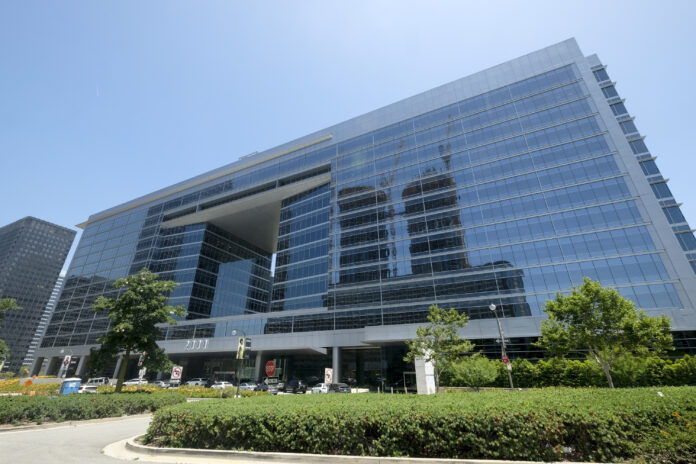The record buyout deal values and exits of 2021 appear a distant memory amid continuing inflation, geopolitical uncertainty, and rising interest rates. But some local private equity firms say there’s still money to be made — as long as you know where to look.

“If you’re an investor, it’s going to be about finding those companies and strategies that can grow faster than the market, can grow faster than their industries, can take share and generate growth in a world where overall growth is going to be slowing,” said Matt Cwiertnia, partner at Ares Management Corp.’s Private Equity Group, which manages $35.3 billion in assets. “(Fund investors) will be looking for alpha generative strategies and managers in 2023, which is going to be very different than beta and cheap leverage strategies that many (investors) benefited from over the past decade.”
Andrew Howard, partner at Westwood-based Shamrock Capital Advisors, which has $4.3 billion in assets under management, shares Cwiertnia’s sentiment.
“In 2023, the investing climate is going to be quite intriguing,” he said. “When I hear people say they’re sitting on the sidelines, that’s fine, but I think this is a time to lean in to opportunities that come from disruption, and that’s where great investments can be made, when people are not looking at that risk the same way.”
Market shift
David Grinberg, a mergers and acquisitions attorney at Sidley Austin in Century City, had a recent run-in with the “sitting on the sidelines” group.
“We had a deal that closed in the fourth quarter where there were no private equity funds in the final stage, and they all gave the same reason: they couldn’t get acceptable or attractive financing,” Grinberg said.
“That had been the first time in a long time where there was, with respect for a company that would otherwise be a private equity target, no private equity showed up. And all of them reported that it was due to financing. Luckily we had two strategics at the end, so it was ultimately a good outcome for the target company. But it really was just a sign of the times, and I’m interested to see how that continues going forward. Private equity has a ton of money to put to use, but to get their returns they don’t want to have to write 100% equity checks, they want to finance some of it.”
Several factors appear to be at play. Last year, the market came off a record level in 2021, which had the second-largest private equity volume of all time, second to only 2007’s private equity volume, according to Cwiertnia.
One of the reasons for the slowdown was the increase in interest rates made by the Federal Reserve Board, meaning that debt for financing private equity deals got much more expensive than it was in 2021, or in many years prior, he said.
There was also a lot more economic uncertainty in 2022 than had been seen in 2021 and in the prior years.
“The outlook for the economy was much more ambiguous in 2022, which created a lot of uncertainty for private equity managers in terms of deploying capital,” Cwiertnia said, adding that “managers were also experiencing record levels of inflation in their portfolios that had not been seen in many, many years, and that has an impact to the P&L for existing portfolio companies and potentially new investments. The ability to forecast the impact of inflation on portfolio companies became much harder, resulting in 2022 being a much slower year in terms of volume overall relative to 2021.”
Looking ahead
This year promises to bring more of the same, but it’s not all gloom and doom.

“There is a real dichotomy in the market,” said Scott Graves, who’s also a partner at Ares Management’s Private Equity Group. “There are significant headwinds, but there are also pockets of real strength. We see more attractive pricing and valuations heading into 2023, stemming from the S&P 500 correcting almost 20% in 2022, the Nasdaq correcting even more. Those declines in prices, both in equities and fixed income, create an attractive investing environment.”
In the United States, he added, we also have very low unemployment – and we have never seen this type of high inflation paired with strength in the labor market.
“It is a new investing dynamic – inflation is high, unemployment is low, revenue and earnings are positive and prices are down materially,” Graves said. “Looking past 2022, the expectation in 2023 is that macro and company performance measures will continue to weaken. But there’s a strong banking system, still quite a bit of elevated home equity that consumers can access, consumers are still spending, and supply chains are now starting to recover. Ultimately, you have a very balanced market. We will see where operating performance and market sentiment lead us.”
Ares’ Private Equity Group operates two strategies — corporate opportunities, which is a for-influence, for-control strategy that primarily focuses on growth buyouts and flexes into distressed (investing) for influence, for control when the market environment suits, and special opportunities, which focuses on noncontrol, debt and equity investing.
The second provides the firm with the flexibility needed in today’s marketplace, according to Graves.
“What has historically happened in distressed cycles is transaction volumes for healthy companies tend to decline, and traditional private equity, direct lending, real estate and venture capital investors struggle to source and deploy capital,” he said. “Through our special opportunities strategy, we can be countercyclical and seek to take advantage of cycles by accelerating sourcing and deployment when prices are down and bargains are more plentiful. We have the flexible mandate to do this through investing in both public securities — targeting purchasing debt at a discount in the public market – as well as providing private hybrid debt and equity securities, which include rescue loans and other privately originated capital infusions.”
At Shamrock Capital — which the late Roy Disney founded in 1978 as Shamrock Holdings to diversify the family’s interest away from The Walt Disney Co. — flexibility is also top of mind.
“We have the ability to invest in later-stage growth companies that don’t have leverage associated with them, as well as traditional buyouts which do have leverage,” Howard said. “So we have flexibility across the capital structure to say, ‘Hey if financing becomes harder to come by, maybe there’s a minority interest strategy.’ We are always mindful of how we structure our investments, what the balance sheets of the companies look like, particularly when there is macro uncertainty. I think 2023 is a year to be very flexible and to have many options.”

